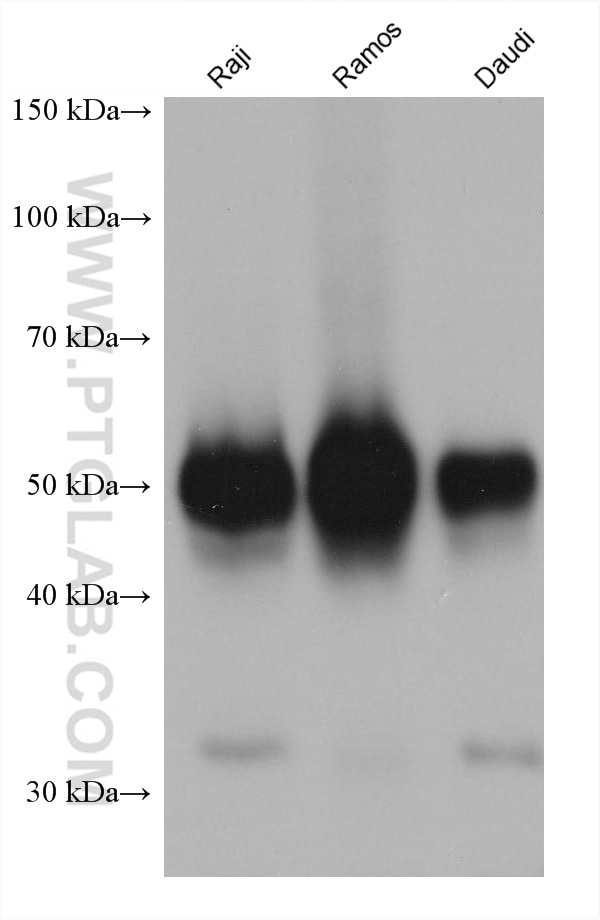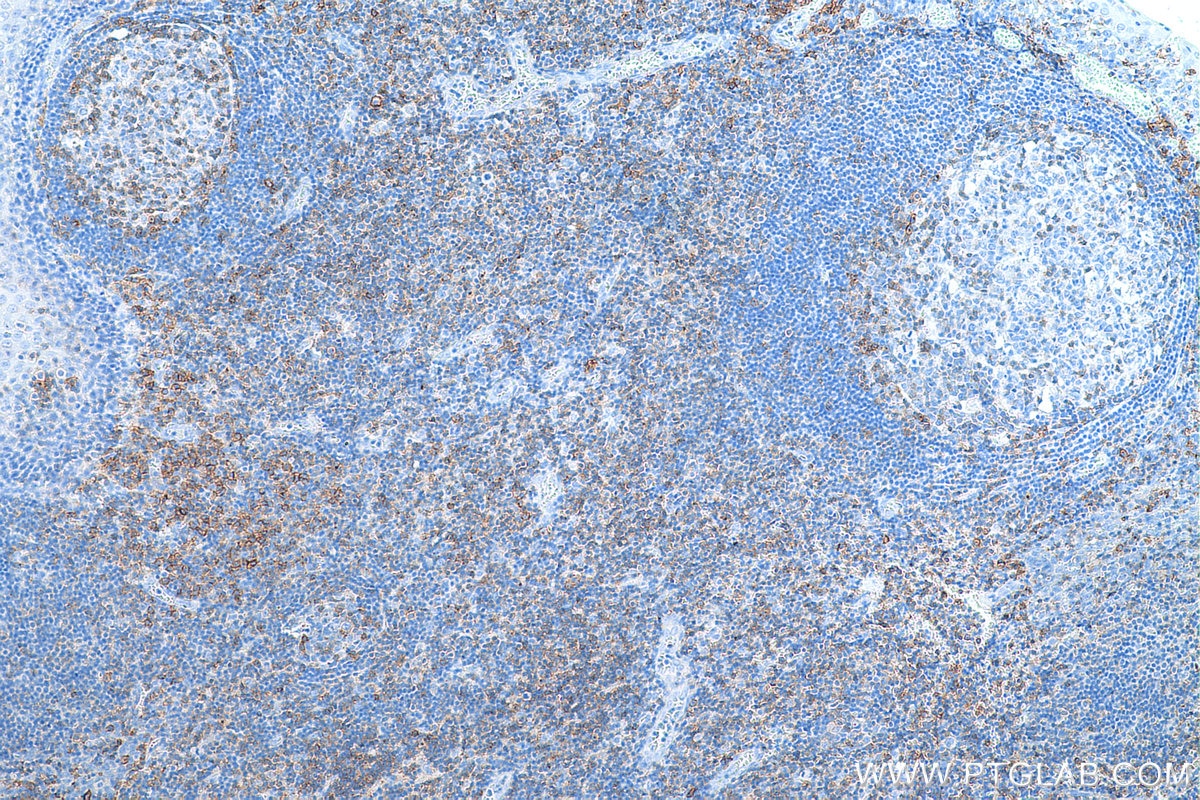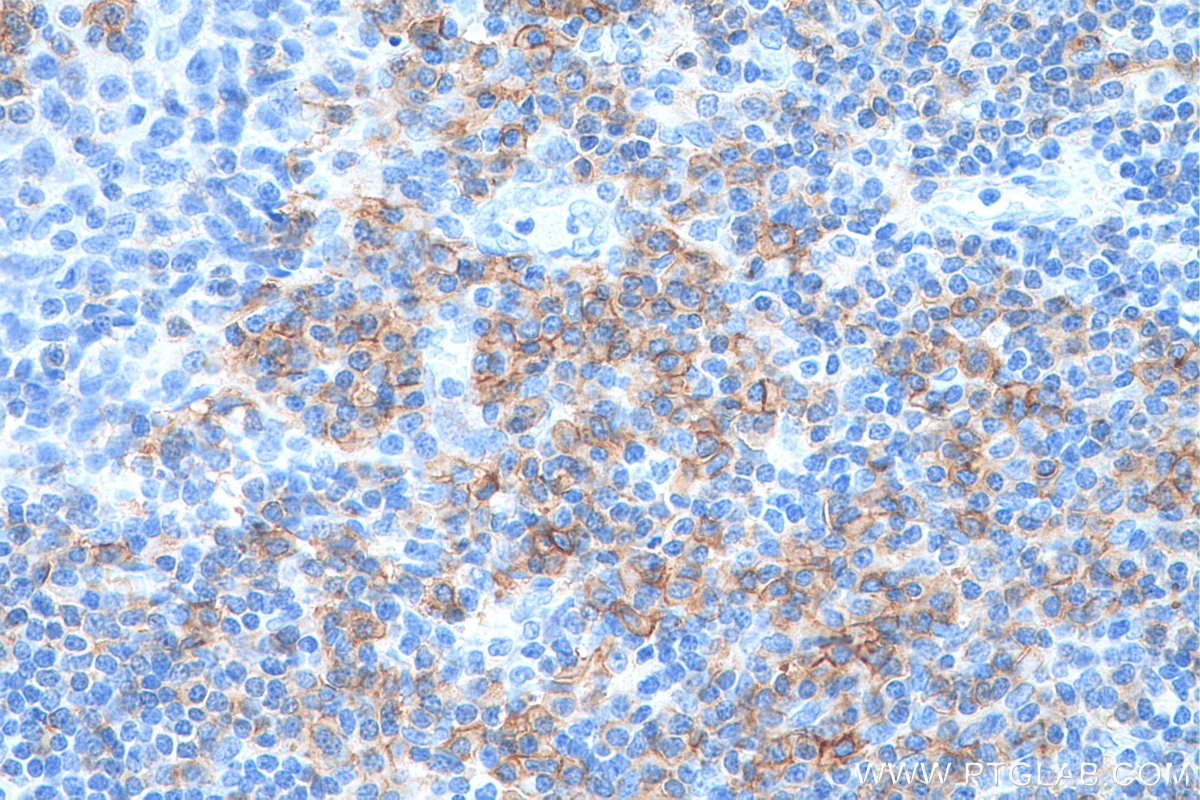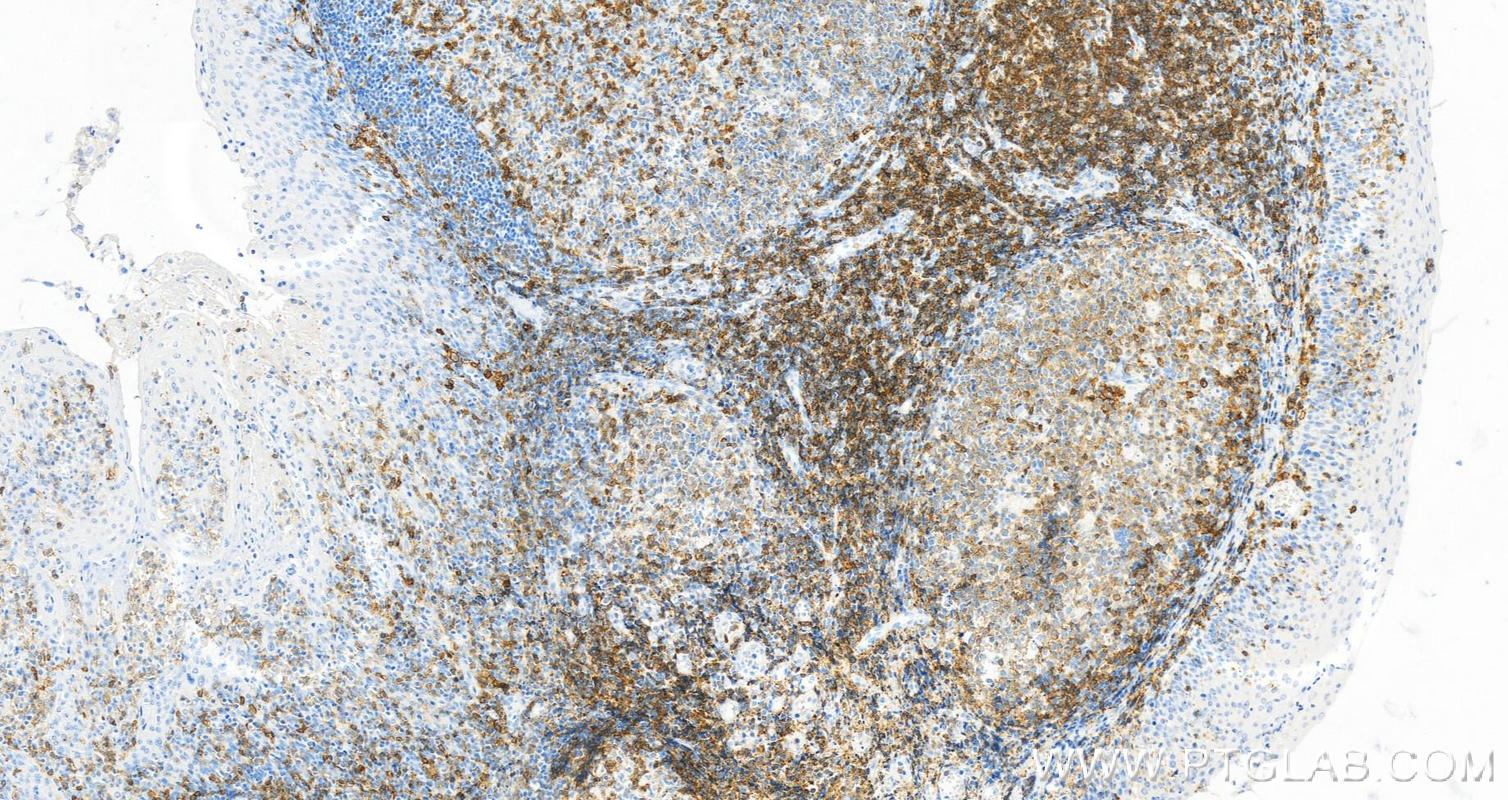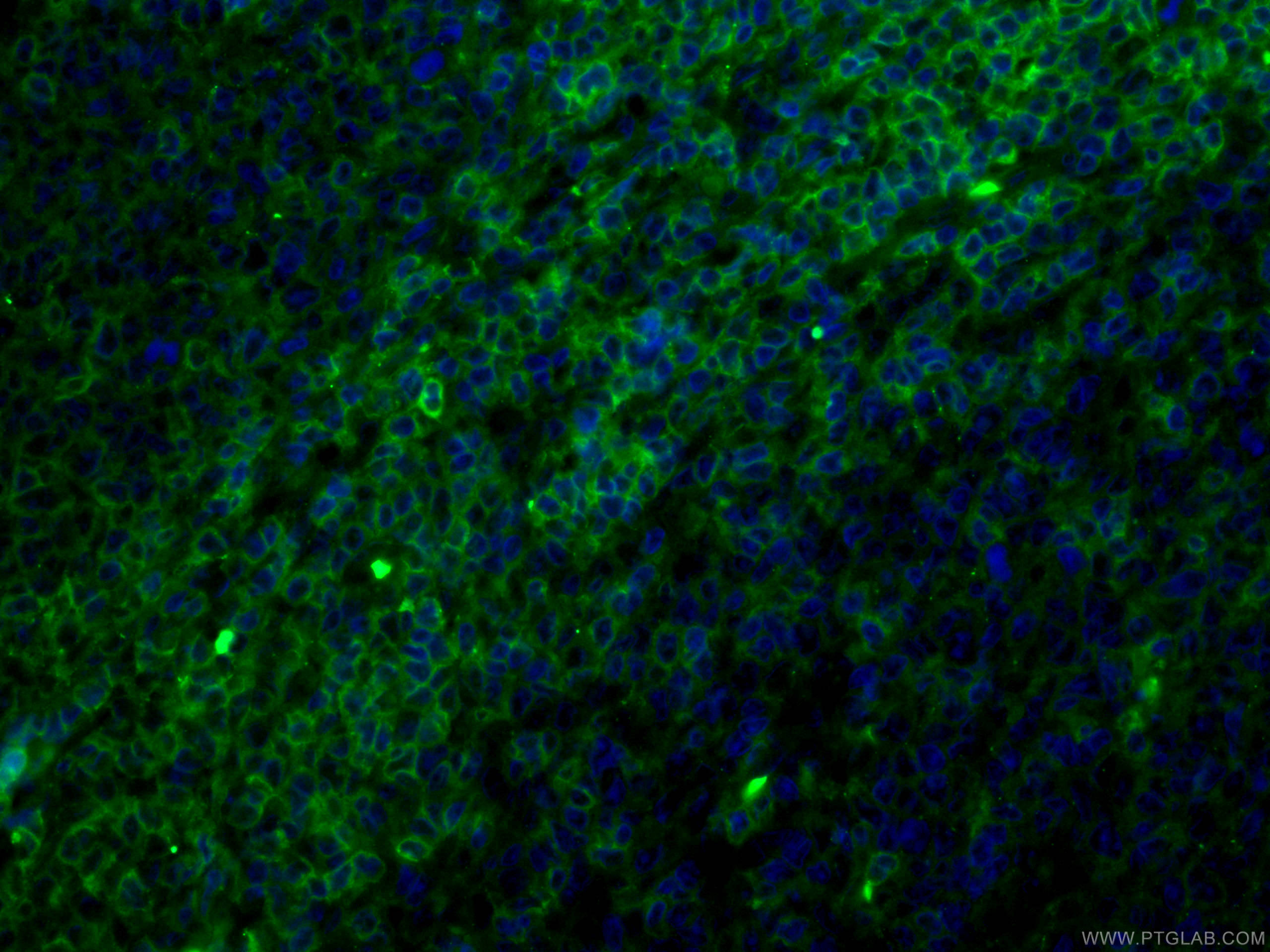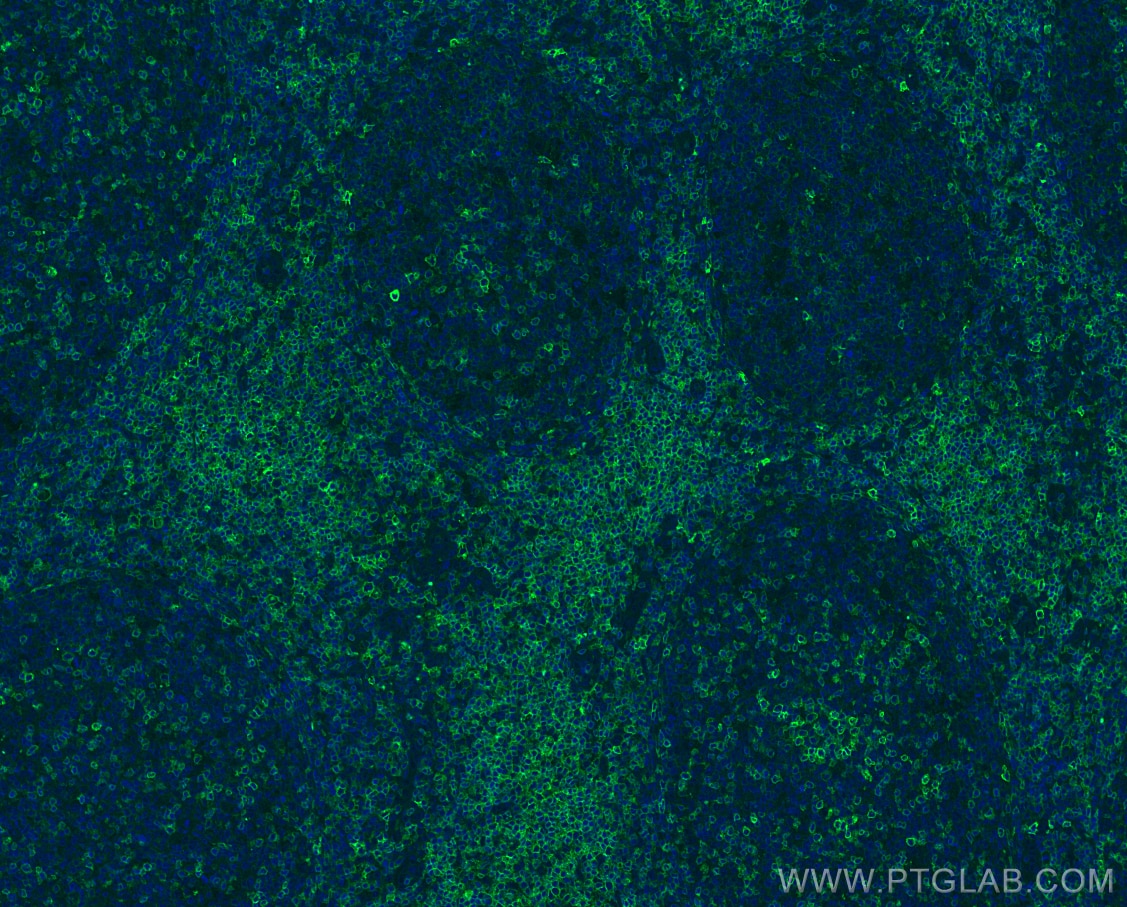Validation Data Gallery
Tested Applications
Recommended dilution
| Application | Dilution |
|---|---|
| It is recommended that this reagent should be titrated in each testing system to obtain optimal results. | |
Product Information
66308-1-PBS targets CD27 in WB, IHC, IF-P, FC, ELISA applications and shows reactivity with human, pig samples.
| Tested Reactivity | human, pig |
| Host / Isotype | Mouse / IgG1 |
| Class | Monoclonal |
| Type | Antibody |
| Immunogen |
CatNo: Ag24537 Product name: Recombinant human CD27 protein Source: e coli.-derived, PET30a Tag: 6*His Domain: 1-260 aa of BC012160 Sequence: MARPHPWWLCVLGTLVGLSATPAPKSCPERHYWAQGKLCCQMCEPGTFLVKDCDQHRKAAQCDPCIPGVSFSPDHHTRPHCESCRHCNSGLLVRNCTITANAECACRNGWQCRDKECTECDPLPNPSLTARSSQALSPHPQPTHLPYVSEMLEARTAGHMQTLADFRQLPARTLSTHWPPQRSLCSSDFIRILVIFSGMFLVFTLAGALFLHQRRKYRSNKGESPVEPAEPCRYSCPREEEGSTIPIQEDYRKPEPACSP 相同性解析による交差性が予測される生物種 |
| Full Name | CD27 molecule |
| Calculated molecular weight | 29 kDa |
| Observed molecular weight | 50-55 kDa |
| GenBank accession number | BC012160 |
| Gene Symbol | CD27 |
| Gene ID (NCBI) | 939 |
| ENSEMBL Gene ID | ENSG00000139193 |
| RRID | AB_2881690 |
| Conjugate | Unconjugated |
| Form | |
| Form | Liquid |
| Purification Method | Protein G purification |
| UNIPROT ID | P26842 |
| Storage Buffer | PBS only{{ptg:BufferTemp}}7.3 |
| Storage Conditions | Store at -80°C. |
Background Information
CD27 (also known as TNFRSF7) is a type I glycoprotein expressed on some B cells and the majority of T cells, and is a member of the tumor necrosis factor (TNF) receptor family. CD27 is required for generation and long-term maintenance of T cell immunity (PMID: 11062504). It is a receptor for CD70 (CD27L). Ligation of CD27 by CD70 induces strong ubiquitination of TRAF and the activation of both canonical and non-canonical NF-kappaB pathways, as well as the JNK pathway (PMID: 19426224). CD27 may also play a role in apoptosis through association with SIVA1.

